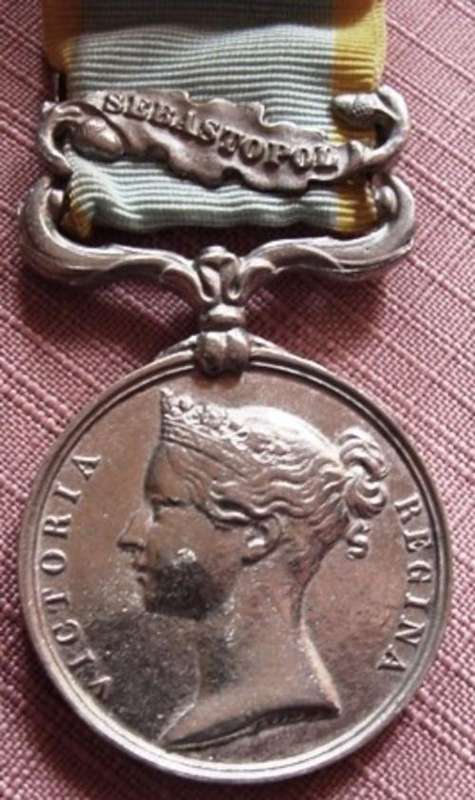
YEAR 1854 0.830oz / 23.5g SILVER CRIMEA MEDAL - READ DESCRIPTION
Check my rate
| Main centres: | 1-3 business days |
| Regional areas: | 3-4 business days |
| Remote areas: | 3-5 business days |

| Main centres: | 1-3 business days |
| Regional areas: | 3-4 business days |
| Remote areas: | 3-5 business days |
DECENT OFFERS CONSIDERED
0.830oz SILVER CRIMEA MEDAL
1 x IS AVAILABLE ON E-BAY
FOR 400 US DOLLARS
The Crimea Medal was a campaign medal approved in 1854, for issue to officers and men of British units (land and naval) which fought in the Crimean War of 1854-56 against Russia.
The medal is notable for its extremely ornate clasps, being in the form of an oak leaf with an acorn at each extremity, a style never again used on a British medal. The suspension is an ornate floriated swivelling suspender, again unique to the Crimea Medal.
Five bars were authorised, the maximum awarded to one man was four.[1] Azoff was only issued to Naval and Marine personnel. The medal was issued without a clasp to those who were present in the Crimea, but not present at any of the qualifying actions. A five bar specimen is held in the Royal Collection.[2]
This medal was also presented to certain members of allied French forces. These medals, in addition to the five British clasps, were often issued with unauthorised French bars; Traktir, Tchernaia, Mer d'Azoff, and Malakof.[1]
The medal was awarded with the British version of the Turkish Crimean War medal, but when a consignment of these were lost at sea some troops were issued with the Sardinian version instead.
The Siege of Sevastopol lasted from September 1854 until September 1855, during the Crimean War. Sevastopol is one of the classic sieges of all time.[9] The city of Sevastopol was the home of the Tsar's Black Sea Fleet, which threatened the Mediterranean. The Russian field army withdrew before the allies could encircle it. The siege was the culminating struggle for the strategic Russian port in 1854–1855 and was the final episode in the Crimean War.
During the Victorian Era, these battles were repeatedly memorialized. The Siege of Sevastopol was the subject of Crimean soldier Leo Tolstoy's Sebastopol Sketches and the subject of the first Russian feature film, Defence of Sevastopol. The Battle of Balaklava was made famous by Alfred, Lord Tennyson's poem "The Charge of the Light Brigade" and Robert Gibb's painting The Thin Red Line, as well as by a panorama of the siege painted by Franz Roubaud. Treating the wounded from these battles was celebrated English nurses Mary Seacole and Florence Nightingale.
|